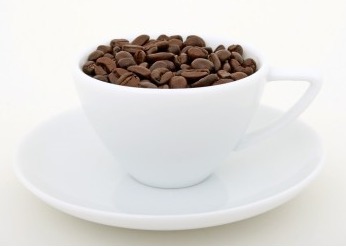The exquisite taste of coffee and the general knowledge of fine coffee

1. Smell the fragrance: taste the strong aroma of coffee
2. look at the color: the coffee had better be dark brown, rather than dark and bottomless.
3. Drink ice water (cold water) before drinking coffee: because cold water has the prominent function of making coffee taste appear brightly, you can understand the taste of coffee more deeply. In addition, you can also clean your mouth.
4. Please drink coffee while it is hot, because the tannin in coffee is easy to change in the process of cooling, and the taste becomes sour, which naturally affects the flavor of coffee.
5. Take a sip of black coffee, and every cup of coffee you drink (authentic) takes five years to blossom and bear fruit. It goes through complicated procedures such as harvesting, roasting and so on, coupled with the careful preparation of coffee brewers. Therefore, take a sip of black coffee without sugar and cream while it is hot, and feel the flavor of the coffee before applying fat powder. Then add the right amount of sugar, take another sip, and finally add cream. Don't forget to have a sip of plain coffee first.
6. Tasting: the entrance of the coffee should be somewhat sweet, slightly bitter, slightly sour and not astringent. Then taste it in small mouthfuls, do not rush to swallow the coffee, but temporarily contain it in your mouth, let the coffee and saliva mix with the air, and then swallow it.
7, the right amount: the right amount of coffee can moderately promote the body to recover from fatigue, refreshing the mind. Coffee has a strong and weak taste, so you can't drink several cups in a row like tea or cola, and the average amount of coffee is 80-100cc. Sometimes if you want to drink three or four cups in a row, you have to dilute the concentration of coffee, or add a lot of milk, so as not to cause nausea, and you might as well change more in the blending of sugar to make the coffee more delicious. In addition, coffee contains caffeine, so drink it in moderation.
Temperature: the best temperature for drink coffee is 85-88 degrees Celsius. The texture of ordinary coffee is not stable, so it is best to taste it while it is hot. The appropriate temperature for coffee is 83 degrees Celsius at the moment of brewing, 80 degrees Celsius when pouring into the cup, and 61-62 degrees into the mouth, which is the most ideal.
Important Notice :
前街咖啡 FrontStreet Coffee has moved to new addredd:
FrontStreet Coffee Address: 315,Donghua East Road,GuangZhou
Tel:020 38364473
- Prev

There are no taboos about coffee culture in various countries. Americans drink coffee.
The United States: there are no taboos for Americans to drink coffee, like playing a game without rules, laissez-faire, no taboos. Americans are dismissive of all kinds of exquisite coffee made by Europeans. Americans drink coffee freely, and at the same time, coffee goes deep into their lives and is difficult to separate, and the influence is so deep that it is not considered a life without coffee. It is said to carry humans for the first time.
- Next

Coffee common sense Coffee warm hands can change people's point of view?
Warming your hands with a cup of hot coffee can change your view of the world around you, US scientists have said, according to the BBC. Warming your hands can lead to a warmer and more generous view of the world, while cold hands often lead to a lack of trust and reluctance to give, researchers write in the journal Nature. In order to
Related
- Beginners will see the "Coffee pull flower" guide!
- What is the difference between ice blog purified milk and ordinary milk coffee?
- Why is the Philippines the largest producer of crops in Liberia?
- For coffee extraction, should the fine powder be retained?
- How does extracted espresso fill pressed powder? How much strength does it take to press the powder?
- How to make jasmine cold extract coffee? Is the jasmine + latte good?
- Will this little toy really make the coffee taste better? How does Lily Drip affect coffee extraction?
- Will the action of slapping the filter cup also affect coffee extraction?
- What's the difference between powder-to-water ratio and powder-to-liquid ratio?
- What is the Ethiopian local species? What does it have to do with Heirloom native species?

